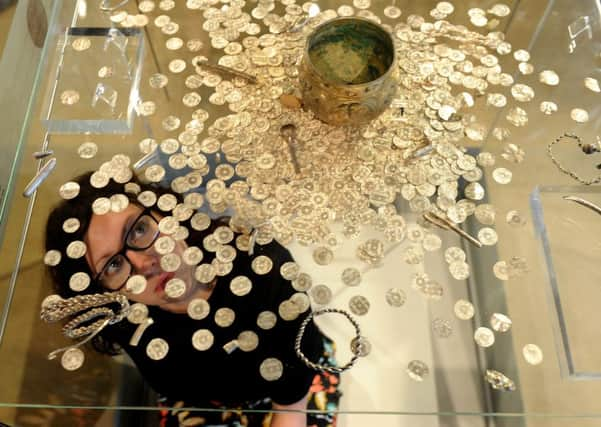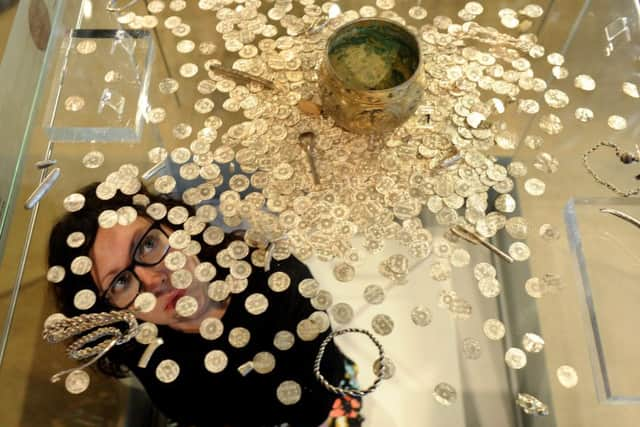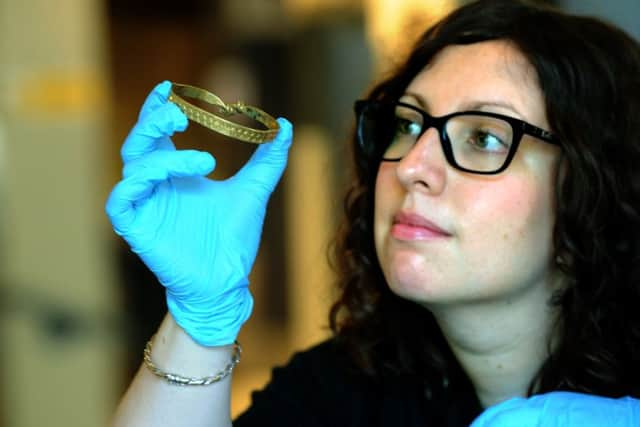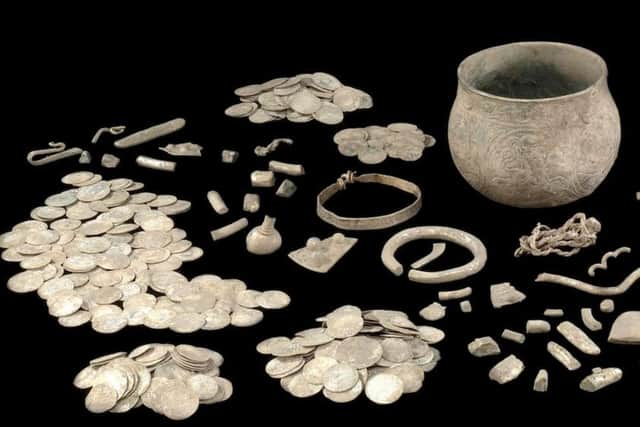‘Once in a lifetime’ Viking hoard back on display


Now the Vale of York hoard has returned to the city where it was discovered, laid deep under a farmer’s field for over 1,000 years. Worth more than £1m, the hoard was found by metal detectorists in 2007, and was bought under a unique partnership by the Yorkshire Museum and the British Museum two years later.
It has not been on show in Yorkshire since 2012, when it left a temporary exhibition at Harrogate’s Mercer Gallery to begin a tour that would take it to Copenhagen, Berlin and London.
Advertisement
Hide AdAdvertisement
Hide AdAndrew Woods, curator of numismatics for York Museums Trust, said: “As a curator, we often talk about our excitement at a new exhibit - but that excitement comes easily with this one. It genuinely is special.


“We say it’s the most important Viking find for 150 years and it certainly lives up to that billing. There’s no other find like it, and it’s wonderful to have it back on display.”
The hoard contains a mixture of different precious metals including 617 coins, complete ornaments, a rare gold arm-ring, ingots and chopped-up fragments known as hack-silver. Perhaps the most spectacular is a gilt silver cup, which was probably made in what is now France in the ninth century.
Most of the smaller objects were hidden inside the vessel, which was wrapped in lead, meaning the hoard was extremely well protected.
Advertisement
Hide AdAdvertisement
Hide AdResearchers believe it was hidden under ground by a wealthy Viking leader - certainly someone from “the highest reaches of society” - during a period of unrest that followed the conquest of Northumbria in 927 by the Anglo-Saxon king Athelstan. One of the coins is inscribed ‘Athelstan - King of All Britain’ - and must have been forged after the conquest, allowing the museum to date the hoard to the period.


The wide geographical provenance of the items - they are from as far apart as Ireland, Afghanistan, Russia, Scandinavia and continental Europe - shows the importance of the Jorvik settlement, Mr Woods said.
“We have silver coins usually found in Russia and Scandinavia, that probably trickled there way here via slaves and furs, and jewellery from Ireland and Russia, while the cup probably came from what is modern day France,” he said. “You can begin to draw lines right across Europe, where these places were connected.
“It shows York’s place in the Viking world, not just for trade, but because of its powerful kings.”
Advertisement
Hide AdAdvertisement
Hide AdWhile other Viking finds have been made since the Vale of York hoard was discovered, most notably the Bedale hoard, which has also been acquired by the museum, none have been as significant as the Vale of York hoard. It is back on display at the Yorkshire Museum from July 3, and will remain for two years.


IT was a treasurer hunters dream come true.
David Whelan and his son Andrew had never found anything more valuable than buttons when their metal detectors began pinging in a muddy field in the Vale of York in January 2007.
When the pinging got louder, they began digging down, and 17 inches below the surface discovered the most important Viking treasure found in 150 years. Immediately recognising its significance, the Whelan’s informed the authorities and eight months later, coroner Geoff Fell declared the find as treasure.
It was valued at just over £1m - split between the Whelan’s and the landowner.